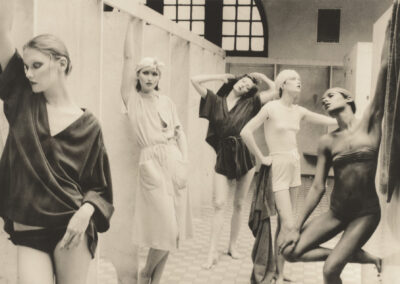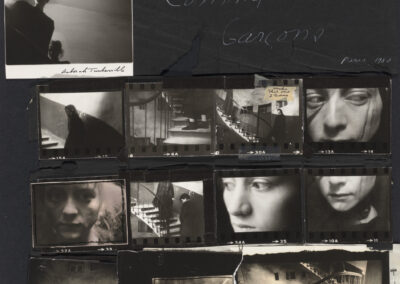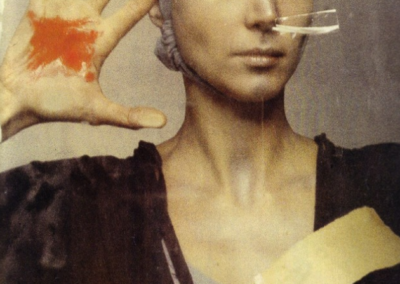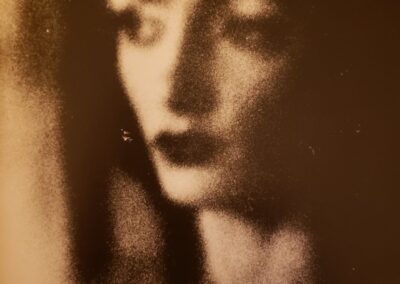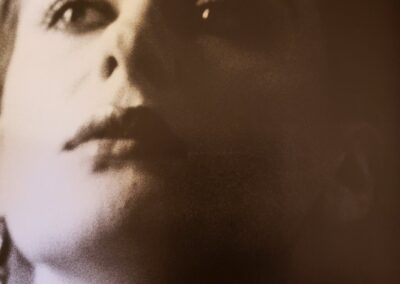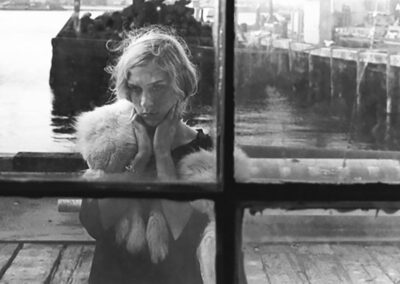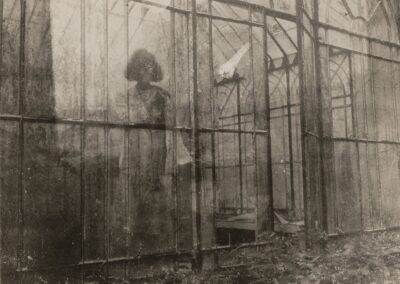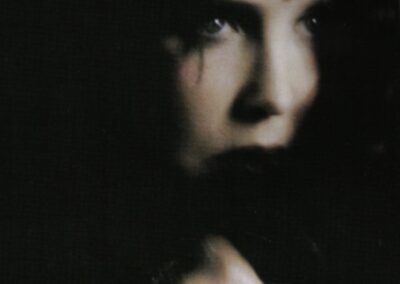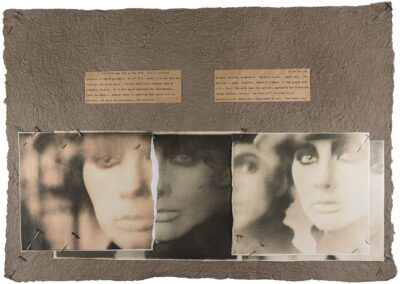Our next Artist You Need To Know is Deborah Turbeville (1932 – 2013).
Deborah Lou Turbeville was an American fashion photographer : before taking on photography full time in the 1970s, she was a fashion editor at Harper’s Bazaar. She is known for how she helped redefine fashion photography from its default style of very starkly lit and traditional approach to a more “brooding, dreamy style….Turbeville’s aesthetic tended towards a dreamy and mysterious style, contradicting the ideas of technical perfection and the sexualization of the female figure.” (from here)
Turberville’s photography stood in stark contrast to her peers of that era who also straddled the worlds of art and fashion (such as Helmut Newton), as her works are immediately recognizable for her use of film grain, softer sepia and pastel hues and tones and how she would play with blurring to evoke an atmosphere in her scenes.
“The idea of disintegration is really at the heart of my work.”
She was born in Boston, MA, in 1932 : Turbeville showed an early and ongoing interest in literature, dance and theater. After graduating high school she moved to New York hoping to pursue a career on stage, but after meeting fashion designer Claire McCardell Turbeville was invited to join McCardell’s design studio instead initially as a studio assistant and ‘sample model’. This led to more connections and opportunities, including a significant and defining meeting with Diana Vreeland, who was the editor of the magazine Harper’s Bazaar. Turbeville took on an editorial position with the magazine (a position that she was amusingly dismissive and contemptuous about in a late career interview) and worked with photographers like Richard Avedon, Bob Richardson, and Diane Arbus. Both the fashion sensibilities of the magazine and the aesthetics of these artists were seminal in Turbeville defining her own unique style and approach
Over her career, her work was published in numerous publications such as VOGUE, The New York Times, W, and The London Sunday Times. But many critics would assert that for Turbeville “fashion photography was not so much aspirational or illustrative as theatrical: designer clothes were costumes assisting in the realization of her gloomy fairy tales.” (from here)
From Aperture : “Turbeville’s vast body of work, which spans several decades and was published in the pages of various fashion magazines and books, as well as exhibited in museums and galleries across the world, is known for its darkness and mystery. Lanky models with haunted eyes stand despairingly in abandoned settings. Beauty was, in Turbeville’s imagination, not just bright and happy but melancholic and brimming with travesty. She was fond of distorting the images, playing with the developing process to create an artificial patina of time, and distressing the prints with tears, folds, and scratches. Photographs she took just two decades ago look as if they were from another century, unearthed in a Paris flea market.”
Turbeville was awarded a Fullbright Grant for her work produced primarily in Russia, specifically St. Petersburg : she split her time between St. Petersburg, New York City and San Miguel de Allende in Mexico. She exhibited around the world, but with notable solo exhibitions at the Centre Georges Pompidou in Paris, the Museo Tamayo Arte Contemporaneo in Mexico City, and the Hermitage Museum in St. Petersburg.
From Frieze : Her photographs “were laced with anhedonia [an aversion to pleasure] rather than humour. In this respect, her work is closer to an earlier generation of photographers, such as Josef Sudek and Germaine Krull, who found enchantment in the more haunted corners of the world.”
She produced a number of publications during her career. Her books of photographs include Wallflower (1979), Unseen Versailles (1981), Les Amoureuses du Temps Pass (1985), Photographers Contemporains (1986), Newport Remembered (1994), The Voyage of the Virgen Maria Candelaria (1996), Studio St. Petersburg (1997), Past Imperfect (2010) and Casa No. Name. (2009).
“I find personalities, look for interesting faces and do pictures in locations suggestive of the rest of the work. I combine clothes, people and place to make a story… I like strange places.”
“…Turbeville produced haunting images, often relying on grand settings that had an air of dilapidation or ruin to contribute to the feel of the work.” (from here)
Turbeville died from lung cancer at St. Luke’s-Roosevelt Hospital Center in Manhattan in 2013, at the age of 81. Her artworks can be found in numerous collections, including The Metropolitan Museum of Art in New York, the Victoria & Albert Museum in London, and the Museum of Fine Art in Boston.








